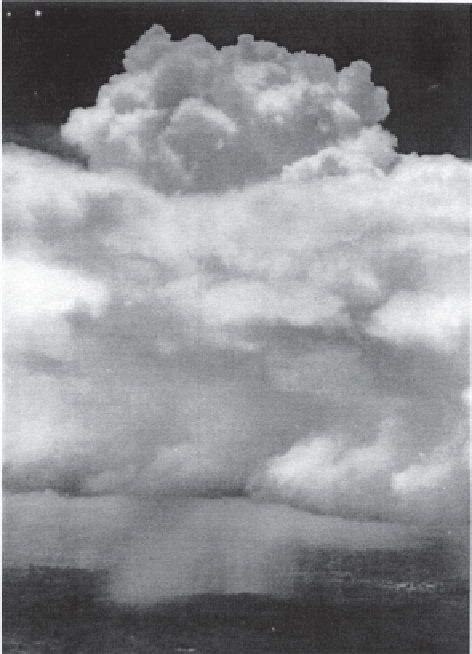Geoscience Reference
In-Depth Information
Fig. 2.8
Seeded cloud that
developed rain following
seeding in 20 min. Fall streak
of the raining cloud is clearly
seen in the photograph
(Murty et al.
2000
)
fluctuation characteristics in traditional meteorological theory. A general systems
theory model for fractal space-time fluctuations in turbulent atmospheric flows
(Selvam
1990
,
2007
,
2009
,
2012a
,
b
,
2013
,
2014
) is presented. Classical statistical
physical concepts underlie the physical hypothesis relating to the dynamics of the
atmospheric eddy systems and satisfy the maximum entropy principle of statistical
physics. The model predictions are as follows:
• Fractal fluctuations of atmospheric flows signify an underlying eddy continuum
with overall logarithmic spiral trajectory enclosing a nested continuum of vortex-
roll circulations that trace the quasi-periodic Penrose-tiling pattern. Satellite im-
ages of cyclones and hurricanes show the vivid logarithmic spiral cloud pattern
whose precise mathematical equiangular spiral (golden) geometry has been used
by meteorologists (Senn et al.
1957
; Senn and Hisar
1959
; Sivaramakrishnan and
Selvam
1966
; Wong et al.
2008
) for locating the centre (eye) of the storm.
• The logarithmic law of wall for boundary layer flows is derived as a natural
consequence of eddy mixing process. The von Karman's constant is equal to 1/
τ
2
(≈ 0.38), where
τ
is the golden mean (≈ 0.618).

Search WWH ::

Custom Search